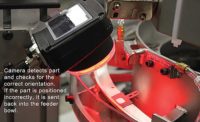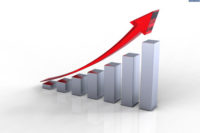Cracking Down on Counterfeit Parts

In May, a police raid discovered a massive cache of counterfeit Toyota car parts in Guangzhou City in southeast China. Acting on information provided by Toyota Australia—the parts were destined for sale Down Under—police seized some 33,000 fake parts, including filters, cables, air bags, master cylinders and brake pads. The parts had an estimated retail value of more than $1 million.
The fake parts were produced at a large assembly plant owned by a company that had previously been caught counterfeiting auto parts from other Japanese brands. In addition to the parts themselves, authorities also identified 55,000 boxes branded in the style of Toyota Genuine Parts, complete with bar codes and serial numbers.
The incident was not unique. Ford Australia recently intercepted fake parts from China, including alloy rims and grills, while General Motors’ Australian subsidiary Holden seized counterfeit body panels, rims, grills, taillights, radiators and other parts.
Such reports are not confined to Australia. In June, police in Riyadh, Saudi Arabia, seized 200,000 counterfeit oil and air filters, made in China, purporting to be from Toyota, Nissan, Hyundai, BMW, Audi, and Mercedes. In 2015, the Saudi Ministry of Commerce confiscated more than 700,000 fake parts. Closer to home, in Aguadilla, Puerto Rico, U.S. Customs and Border Protection officers in May seized 1,000 counterfeit automobile parts during an inspection of merchandise from Hong Kong.
Counterfeiting is big business. The Federal Trade Commission estimates the market for fake car parts at approximately $12 billion a year.
It’s not just the loss of money that’s an issue, but quality, safety and damage to a brand’s reputation. Counterfeit parts may not meet safety standards and may be produced using inferior materials, even though they look and feel identical to a brand name one. And, like other counterfeit goods, the sale of pirated auto parts has been linked to organized crime and terrorist organizations.
Most counterfeit auto parts in North America are imported, according to a report from the Motor & Equipment Manufacturers Association. A large percentage is produced in China, which accounts for more than 80 percent of the goods seized at U.S. borders. However, other countries such as Taiwan, Hong Kong, Russia, India, Pakistan and Uruguay also have been reported as major exporters of counterfeit goods.
Consumers can protect themselves against fakes by only conducting business with reputable repair shops or with the manufacturer’s dealership network. Consumers should also use caution when purchasing auto parts on the Internet. If prices seem “too good to be true,” they probably are.
For their part, OEMs and their suppliers should make sourcing decisions wisely and consider more than just the “landed cost” of imported parts. We wonder how many manufacturers think about counterfeiting and intellectual property rights when conducting a cost-benefit analysis of off-shoring. They should.
Looking for a reprint of this article?
From high-res PDFs to custom plaques, order your copy today!






